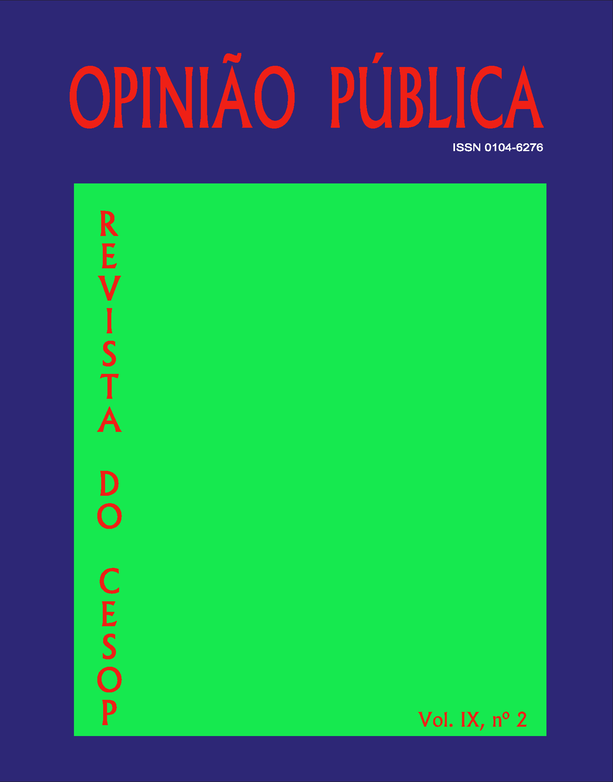Opinião Pública – Vol. 09, Nº 2 2003
Articles in this issue
Author: Mabel Piccini
This article examines the cultural changes at the end of the XXth century, focusing the urban spaces and its narrow relationship with audiovisual apparatus. In this sense, it stablishes the emergence of new sceneries: changes in life-style, in the perceptions of time and space, and in the uses of the city. In the same way, it describes the emergence of distinct courses of visibility and expression, and the building of hibrid places – without “territorial” affiliation – through technologies and reports based on the importance of the image and the velocity.
Author: Fabián Echegaray
This paper illustrates the effects of Internet usage on attitudinal and behavioral aspects and describes different ways in which users’ mode of relationship with the Internet can be profiled and classified for segmentation and analysis purposes, in Brazil. First, differences between-groups of users and non-users are examined based on series of general population sample survey studies. Following this, a new categorization of modes of relationship with the Internet is proposed using information of usage patterns. Finally, I test the relative leverage of this approach, vis-à-vis more standard classifications, in explaining users’ habits and postures on issues related to the spheres of consumption and politics.
Author: Jorge Lanzaro
This article analyses the political transition and the current vitality of the Uruguayan party system. After a period of crisis that lead to the rupture of democracy in the seventies, in the nineties the party system retrieved its centrality in the process of the democratization. During this process, the party realignment resulted in a moderate multipartysm, with a strengthened left, mainly represented by the Frente Amplio. The rise of the Frente Amplio resulted of its capacity to confrontate the traditional parties, its evolution as a catch-all organization, its ideological transformation and electoral performance. To the traditional parties this process promoted the learning of political compromises and participation in government coalitions; to the process of liberal transition, it resulted in a political scenery with moderate ideological distances, without polarization. However, the left-right parameters still defines the axis of electoral competition.
Author: Francisco Fonseca
Through opinion analysis of the editorials of the four main daily newspaper, that is, Jornal do Brasil, O Globo, Folha de S. Paulo and O Estado de S. Paulo – considered here as “private vehicles of hegemony” – this paper intends to show their positions related to the Constituent’s social order of 1987-88th, as long as we consider that it contributes to understand the reaction against the Labour’s Laws. We analyse, besides, the strategies used to accomplish them. We concluded that through several mechanisms the great press has decisively contributed, in a combative way, as for the introduction of the neo-liberal ideas in the country – since it has acted so as to make them known and popular – as for the conservative and patronal ideas.
Authors: Ciro Coutinho e Rubens Figueiredo
The article analyses the 2002 presidential campaign considering the results of electoral polls published in mass media, the electoral advertising, defined by law on television, and the political context that have resulted in the victory of Labor’s Party candidate, Luís Inácio Lula da Silva.
